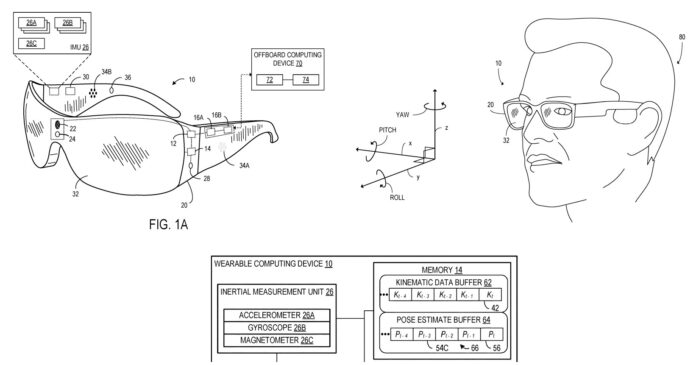Microsoft is not giving up on the idea of building a smart glass running Windows (or Windows Holographic OS). While the Windows Mixed Reality business is on the back burner, Microsoft could still be interested in Windows-powered smart glasses with Copilot/AI. That’s according to a few new patents spotted by Windows Latest.
These parents, titled “COMPOSITE POSE ESTIMATE FOR WEARABLE COMPUTING DEVICE” and “RESOLUTION ENHANCEMENT IN SPATIAL-FREQUENCY SPACE“, were published by the USPTO in the third week of February and March, respectively. Unlike HoloLens, which is a holographic device, these smart glasses are geared more towards the average consumer.
Spotted by Windows Latest, the first patent was filed by Microsoft in November 2023 and published by UPSTO in February 2024. On the other, the second patent was filed by Microsoft in September 2022 and published by USPTO in March 2024. Microsoft also registered the patents with European authorities.
According to the patent application, Microsoft’s smart glass, which could use a specific version of Windows, aims to accurately track movement and position even in environments that do not seem normal. This is possible by using an inertial measurement unit (IMU) to gather kinematic data.

After collecting the kinematic data, the smart glass uses machine learning models to estimate current and past velocities.
These numbers help Microsoft’s smart glass determine the positions of objects near you. The idea is to compute precise current and prior pose estimates, which are then combined into a composite pose estimate.
Microsoft’s patent explains that these factors can help the smart glass determine locations or positions of the objects more accurately. It doesn’t have to rely on GPS or visual data, and also makes it more reliable even in situations where light is limited or there are too many objects around you (indoor settings).


The second patent promises a new camera system that improves image resolution using using a lamp for lighting, a lenslet array, and an image engine. The lenslet array, placed over an image-sensor array, focuses light from the subject onto the sensor.
As a result, the camera built into the smart glass can capture and produce high-resolution images. Meta’s Meta Ray Ban glasses are quite popular for their camera, which can capture high-resolution images and then use AI to process information.
Microsoft’s idea is somewhat similar but is supposed to produce better results. This approach is preferred because smart glasses have a small physical aperture.
Could Microsoft launch an AR glass for consumers?
The thumb rule is that patents generally do not mean a new device is coming. Also, Microsoft’s Mixed Reality business is on the back burner, but it’s not dead. Microsoft is focusing more on cloud tech and there are no clues of a new AR glass, but the company has recently been filing more patents for AR glasses than ever.
Last year, a patent proposed an internal storage system to extend battery life of the AR glasses. Microsoft also considered a device with battery inside a detachable earpiece to help the glasses last longer.





